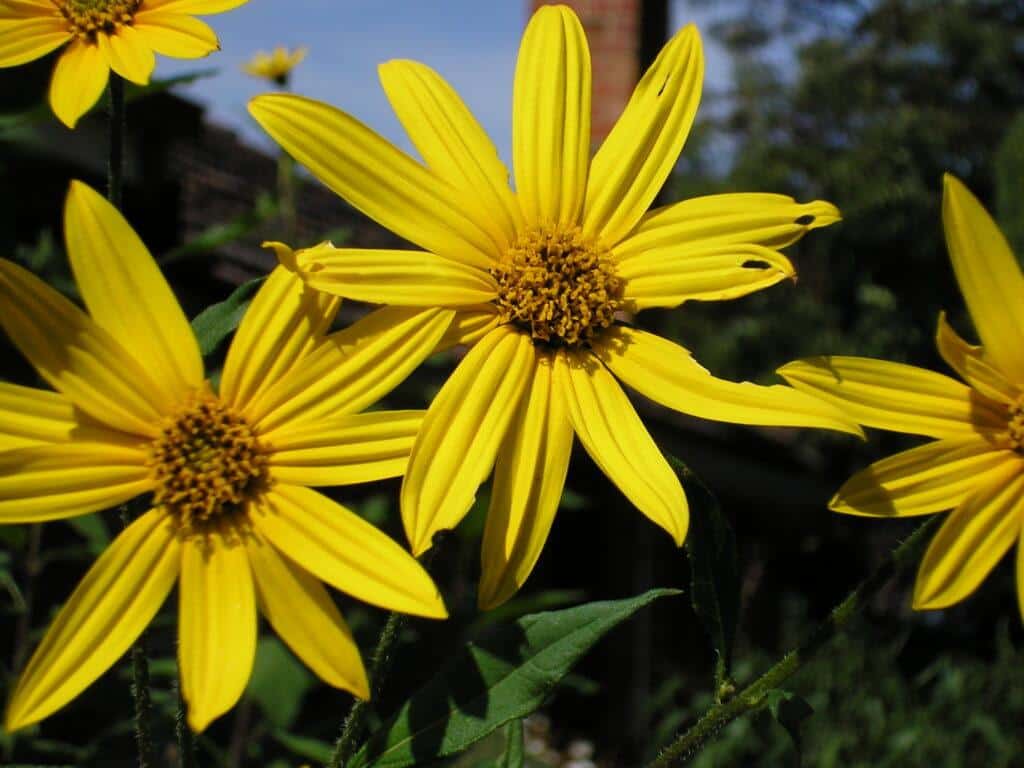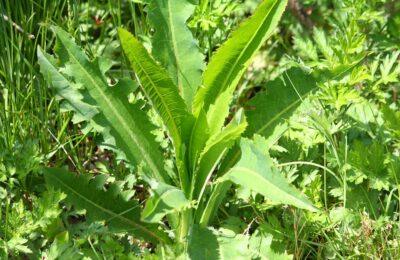If you ever find yourself in a wilderness survival situation, then you’ll have two initial goals. One, you’ll need to find or build a suitable shelter. And two, you’ll need food.
Most experienced wilderness survivalists carry simple fishing gear (some line and hooks) as well as the materials to build snares, deadfalls and traps to capture birds and fish. However, the truth is that hunting and fishing with primitive methods requires considerable skill.
Fortunately, nature often provides the observant individual with another bountiful source of calories in the form of wild fruits, nuts, tubers and greens. Although they are seasonal, they are both surprisingly tasty and highly nutritious. Here’s four of the best foods to forage:
1. Wild lettuce
The human body requires certain vitamins and minerals which are most easily obtained from eating green, leafy vegetables such as wild lettuce. This plant contains the vitamins A, E, C, K, and the minerals iron, magnesium, manganese, calcium, folic acid, carotenoids and Omega 3 fatty acids. It is high in fiber, which helps to keep your digestive system working properly, and it contains antioxidants to help prevent cell damage and cell mutations. Located throughout North America in wooded regions where the soil has been disturbed, wild lettuce is commonly found in forested river bottoms, adjacent to roads and trails, along the edges of woods, and in shaded, fallow, fields. Appearing as a biennial plant that grows to a height of approximately three feet, it produces a rosette of large, long, slim, lance-shaped, green leaves up to 10 inches in length.
New Solar Oven Is So Fast It’s Been Dubbed ‘Mother Nature’s Microwave’
The leaves have distinctly lobed edges and the plant produces a dandelion-like head from which the flowers bloom. In addition, all parts of the plant turn light orange-brown upon exposure to the air. It should be noted that there are several different species of wild lettuce throughout North America and that the leaves of this plant appear very similar to the dandelion plant (which is edible as well).
2. Jerusalem artichoke
The Jerusalem artichoke (Helianthus tuberosus) is one of the best known wild tubers in North America and it appears as a green, leafy, flowering weed. Its tubers are high in starch and sugars, which the human body converts to carbohydrates. It also contains thiamin, iron, phosphorus and potassium. Widespread in North America east of the Mississippi River, the Jerusalem artichoke can be found from southern Canada to the Gulf of Mexico and from the Great Plains to the East Coast. It prefers to grow in sandy river bottoms, floodplains, lake edges, creek sides and wet areas where there is plenty of sunlight and where the soil is sand, loamy sand or sandy loam. A member of the sunflower family, this plant is tall, green and leafy with a single, straight, round, unbranched (except occasionally near the top) stalk, usually measuring 1/2 inches to 3/4 inches in diameter. The stalk is covered with short, stiff, raspy hairs which remain after the plant dies in the fall. Jerusalem artichokes produce large flower heads that usually measure two to three inches in diameter and look like miniature sunflowers, except that the discs in the center are yellow instead of black and much smaller. The edible part of this plant is the tubers it produces below ground, which can be dug at any time of the year but are not fully ripe until late fall, winter or early spring. Also, because of their flatulent properties, they should be cooked by either steaming, boiling or baking for one to six hours (depending on the time of year they are harvested) to convert any inulin they contain to simple sugars and reduce the chance of stomach upset. If cooked properly, they have a highly palatable, almost buttery flavor.
3. Morels
Thousands of foragers each year hunt for morel mushrooms simply for their superior taste. This distinctive fungi has a honeycomb-like appearance and the ascocarps are highly prized by gourmet cooks (especially for French cuisine). Morel mushrooms can be found throughout most of the lower 48 states and require moist soil, deep shade, and warm weather to propagate. As a result, they are most often available in the spring. Yellow morels (Morchella esulenta) and black morels (Morchella elata) are commonly found beneath deciduous trees such as oak, ash, elm, sycamore and tulip poplars, as well as fruit-bearing trees such as apple. In addition, morels are seldom found in close proximity to most of the common poisonous mushrooms but they do grow adjacent to false morels (Gryomitra sp.) and elfin saddles (Verpa sp.).
Portable Power Unit Will Jump Start Your Car, Power Virtually Anything — And Even Air Up Your Tires!
False morels (which are poisonous) can be differentiated from true morels by careful study of the cap, which is often wrinkled rather than honeycomb or net-like. The easiest way to tell a false morel from a true morel is that false morels contain a cotton ball-like substance inside their stem while true morels have a hollow stem. Also, the caps of the false morel can be easily twisted in comparison to that of the true morel. Lastly, false morels often display a reddish-brown color. Morel mushrooms should be cooked prior to consumption because they occasionally contain insect larvae.
4. Acorns
While neither as palatable nor as glamorous as the other foods mentioned here, the fact is that acorns are one of the most widespread, readily available forage foods in the U.S. In fact, oak trees are so common in the eastern U.S. that most people consider their acorns to be a nuisance. Various species of oak trees exist all across the U.S. except in desert regions, and they all produce acorns. Once you have gathered a store of these nuts, you will need to examine each one carefully and discard any with worm holes or deformed and soft hulls. To crack the shell, you will need to use a baton or a hammer stone, combined with an anvil. Once you remove the nut portion, you must soak it to remove the tannic acid, which has a bitter taste. You will need to repeatedly soak the pieces for a couple of hours (changing the water after each soaking) in order to leech the tannic acid from the nuts. Once they are fully leeched, you can either boil them or crush the pieces and mix them with water to form a paste, which can then be baked like bread.
Although there is actually a very wide variety of edible plants available to a forager in a wilderness survival situation, the five plants listed above are all widespread, commonly available foods that will provide your body with the necessary vitamins, minerals and carbohydrates it needs. They also provide nutrients that you simply cannot obtain from consuming protein alone. If you know where to look and what to look for, there is a veritable banquet of foods to forage throughout the year that can easily keep you alive in a crisis situation.
What wilderness foods would you add to the list? Share your tips in the section below:
Learn How To ‘Live Off The Land’ With Just Your Gun. Read More Here.
 Off The Grid News Better Ideas For Off The Grid Living
Off The Grid News Better Ideas For Off The Grid Living







